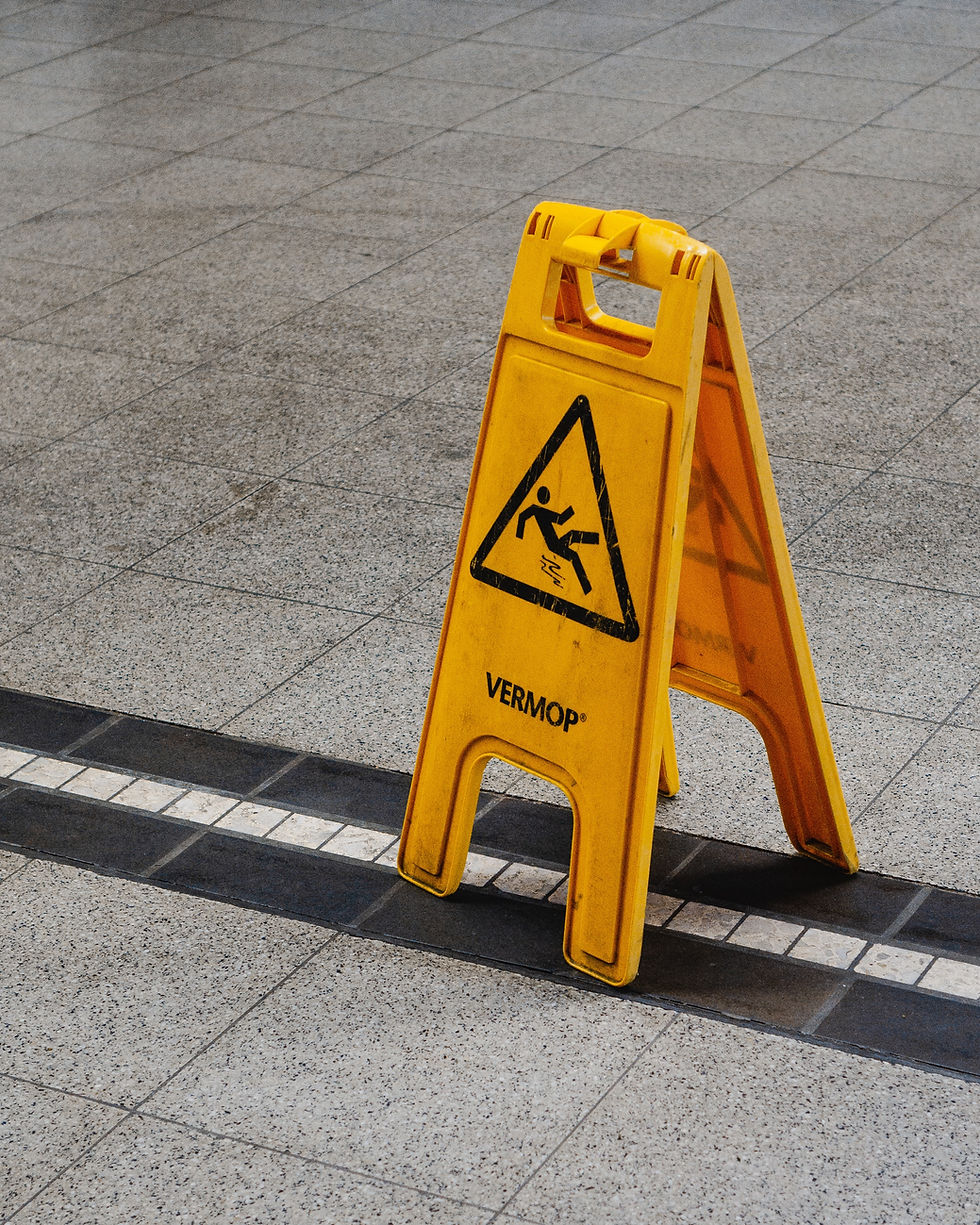Do you know about slips and trips in the workplace?
- jodie2839
- Jan 8, 2024
- 2 min read

Slips and trips are the most common cause of injury at work. On average, they cause 40 per cent of all reported major injuries and can also lead to other types of serious accidents, for example falls from height.
The law
The Health and Safety at Work etc Act 1974 (HSW Act) requires employers to ensure the health and safety of all employees and anyone who may be affected by their work, so far as is reasonably practicable. This includes taking steps to control slip and trip risks.
The Management of Health and Safety at Work Regulations 1999 require employers to assess risks (including slip and trip risks) and, where necessary, take action to address them.
The Workplace (Health, Safety and Welfare) Regulations 1992 require floors to be suitable, in good condition and free from obstructions. People should be able to move around safely.
Steps to prevent slips and trips accidents
Stop floors becoming contaminated by using entrance matting, fixing leaks, making sure plant and equipment are maintained, and plan pedestrian and vehicle routes to avoid contaminated areas.
Use the right cleaning methods such as ensuring that your cleaning method is effective for the type of floor you have, leaving smooth floors dry after cleaning or exclude pedestrians until the floor is dry, promptly removing spillages, have effective arrangements for both routine cleaning and dealing with spills, and using the appropriate detergent mixed at the correct concentration.
Consider the flooring and work environment by checking for loose, damaged and worn flooring and replace as needed, making sure lighting is sufficient and that slopes or steps are clearly visible, keeping walkways and work areas clear of obstructions.
Have the right footwear (where floors cannot be kept clean and dry, slip-resistant footwear can help prevent slip accidents), trial footwear first to make sure it is suitable for the environment and for those who will be wearing it (e.g. comfort and fit), if footwear is supplied as personal protective equipment (PPE), it must be supplied free of charge to employees.
Think about people and organisational factors such as how work is organised and managed (e.g. to avoid rushing, overcrowding, trailing cables), and making sure employees are involved in the decisions that affect them (e.g. choice of PPE footwear or a change in cleaning methods).
How can employees help prevent slips and trips in the workplace?
Report near misses and accidents promptly to your employer
If you see slip and trip risks, try to sort them out or inform your employer
Help to keep floors clean and dry
Clear up spillages straight away
If you think of ways of preventing contamination (water, oils, cardboard, waste etc) from getting onto the floor, suggest them to your employer
Avoid causing trailing cables
Keep place of work clear of obstacles
Ask your employer to mark slopes and changes of levels
If there isn't adequate lighting, report it
Follow all safety advice
How can logic assist?
With the help of our trained and experienced consultants at Logic, we can help businesses determine if they have a problem in their workplace and what they can do to minimise the risks to their workforce.
We can provide training and support to suit your needs.
For more information please call us on 01179575154 or email:
For technical enquiries technical@logicshesolutions.co.uk
For training enquiries training@logicshesolutions.co.uk











Comments